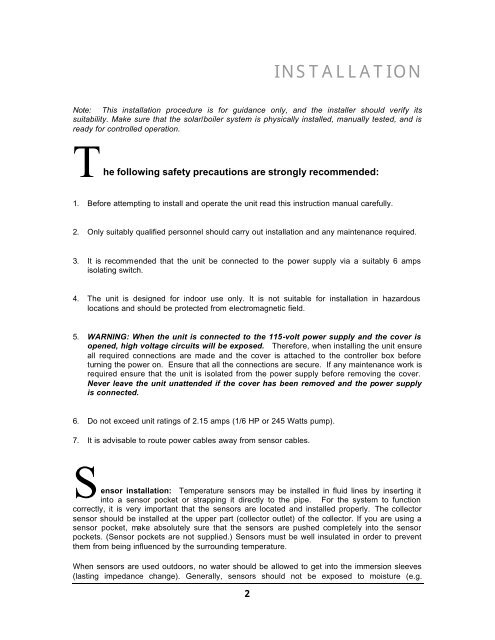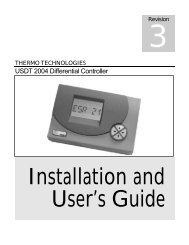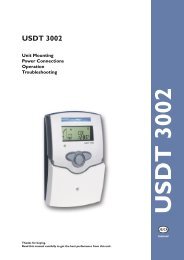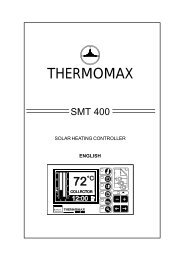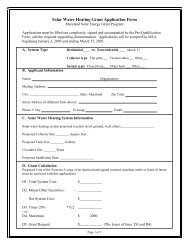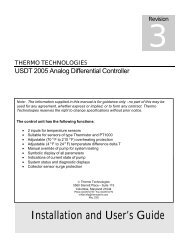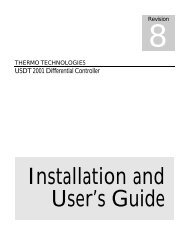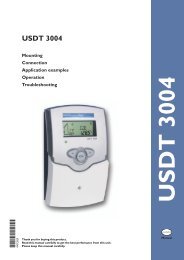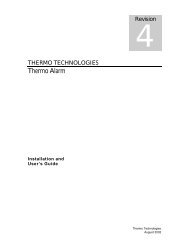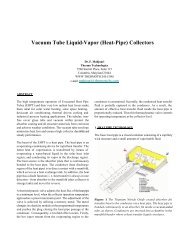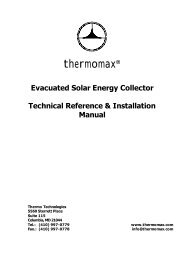USDT 3000 Temperature Differential Controller with two Relays
USDT 3000 Temperature Differential Controller with two Relays
USDT 3000 Temperature Differential Controller with two Relays
You also want an ePaper? Increase the reach of your titles
YUMPU automatically turns print PDFs into web optimized ePapers that Google loves.
INSTALLATION<br />
Note: This installation procedure is for guidance only, and the installer should verify its<br />
suitability. Make sure that the solar/boiler system is physically installed, manually tested, and is<br />
ready for controlled operation.<br />
T he following safety precautions are strongly recommended:<br />
1. Before attempting to install and operate the unit read this instruction manual carefully.<br />
2. Only suitably qualified personnel should carry out installation and any maintenance required.<br />
3. It is recommended that the unit be connected to the power supply via a suitably 6 amps<br />
isolating switch.<br />
4. The unit is designed for indoor use only. It is not suitable for installation in hazardous<br />
locations and should be protected from electromagnetic field.<br />
5. WARNING: When the unit is connected to the 115-volt power supply and the cover is<br />
opened, high voltage circuits will be exposed. Therefore, when installing the unit ensure<br />
all required connections are made and the cover is attached to the controller box before<br />
turning the power on. Ensure that all the connections are secure. If any maintenance work is<br />
required ensure that the unit is isolated from the power supply before removing the cover.<br />
Never leave the unit unattended if the cover has been removed and the power supply<br />
is connected.<br />
6. Do not exceed unit ratings of 2.15 amps (1/6 HP or 245 Watts pump).<br />
7. It is advisable to route power cables away from sensor cables.<br />
S<br />
ensor installation: <strong>Temperature</strong> sensors may be installed in fluid lines by inserting it<br />
into a sensor pocket or strapping it directly to the pipe. For the system to function<br />
correctly, it is very important that the sensors are located and installed properly. The collector<br />
sensor should be installed at the upper part (collector outlet) of the collector. If you are using a<br />
sensor pocket, make absolutely sure that the sensors are pushed completely into the sensor<br />
pockets. (Sensor pockets are not supplied.) Sensors must be well insulated in order to prevent<br />
them from being influenced by the surrounding temperature.<br />
When sensors are used outdoors, no water should be allowed to get into the immersion sleeves<br />
(lasting impedance change). Generally, sensors should not be exposed to moisture (e.g.<br />
2


